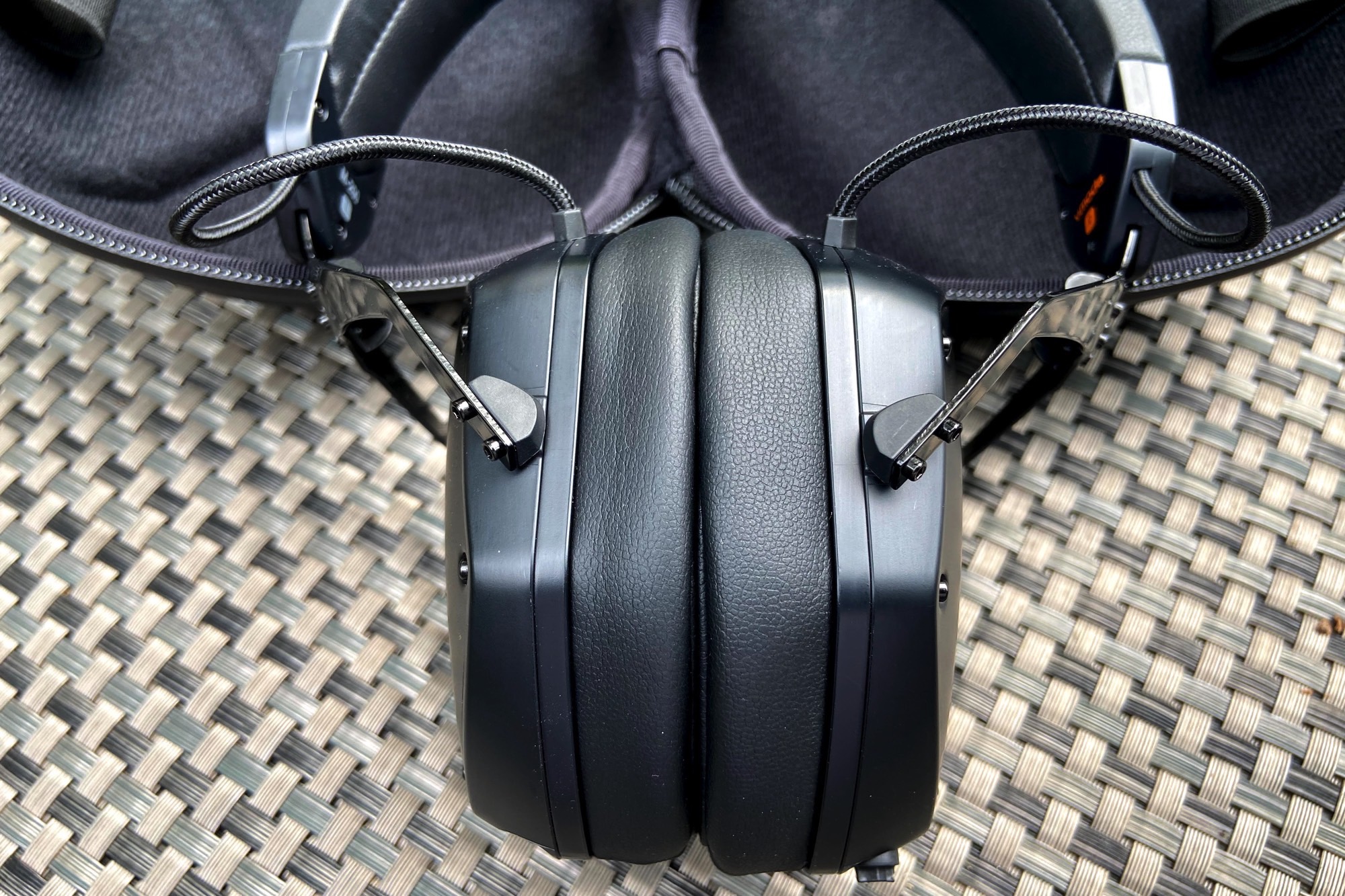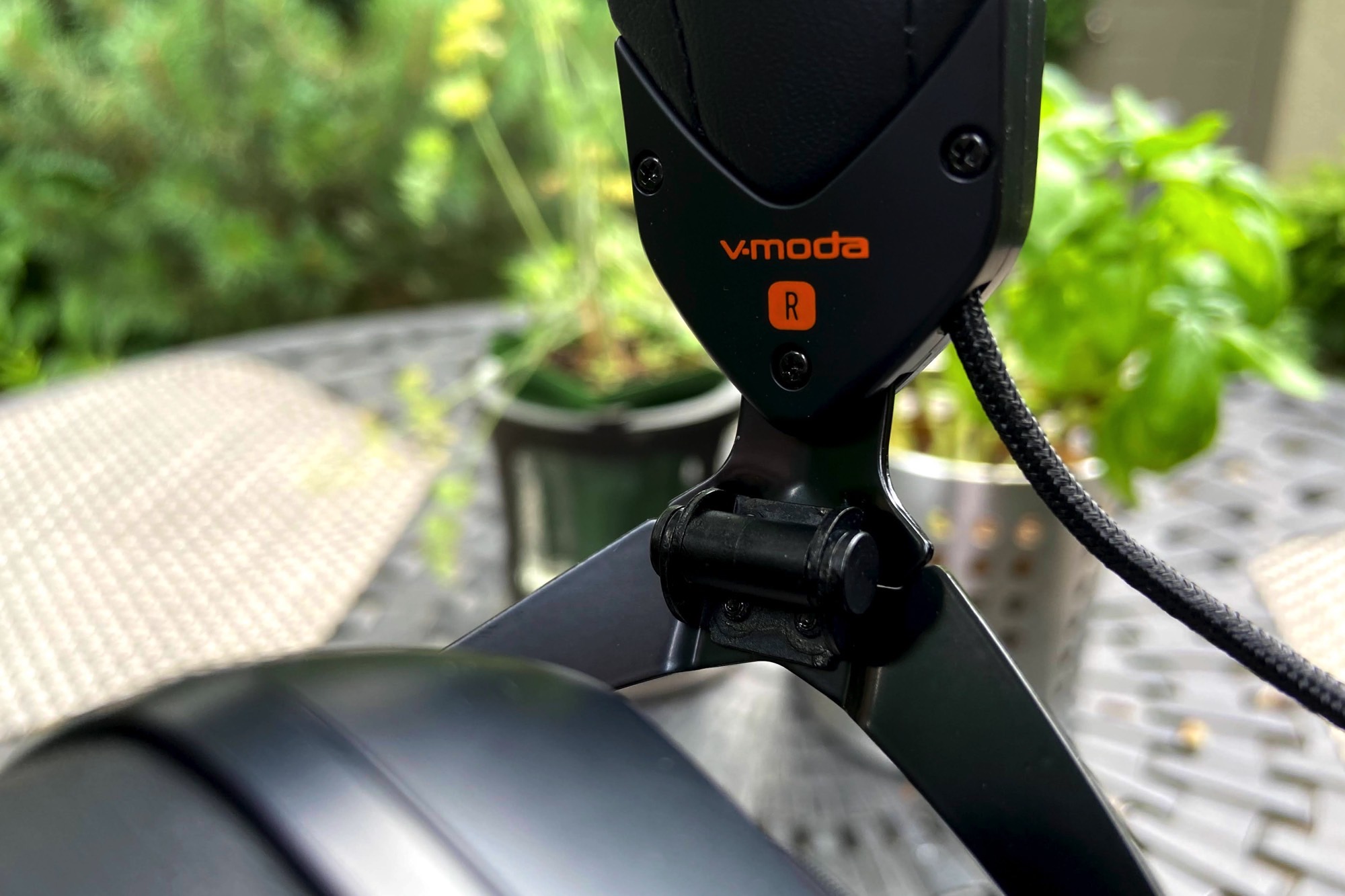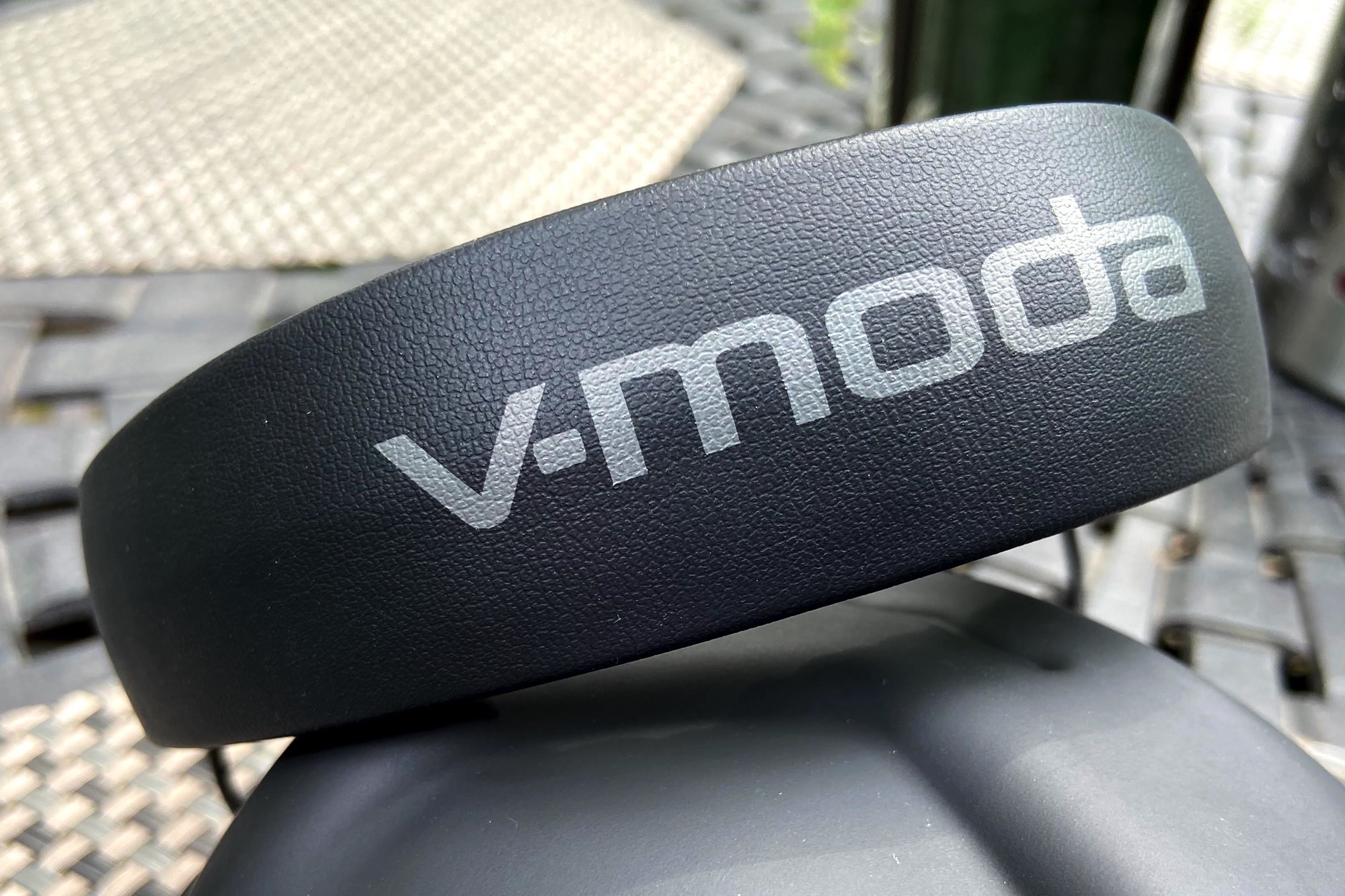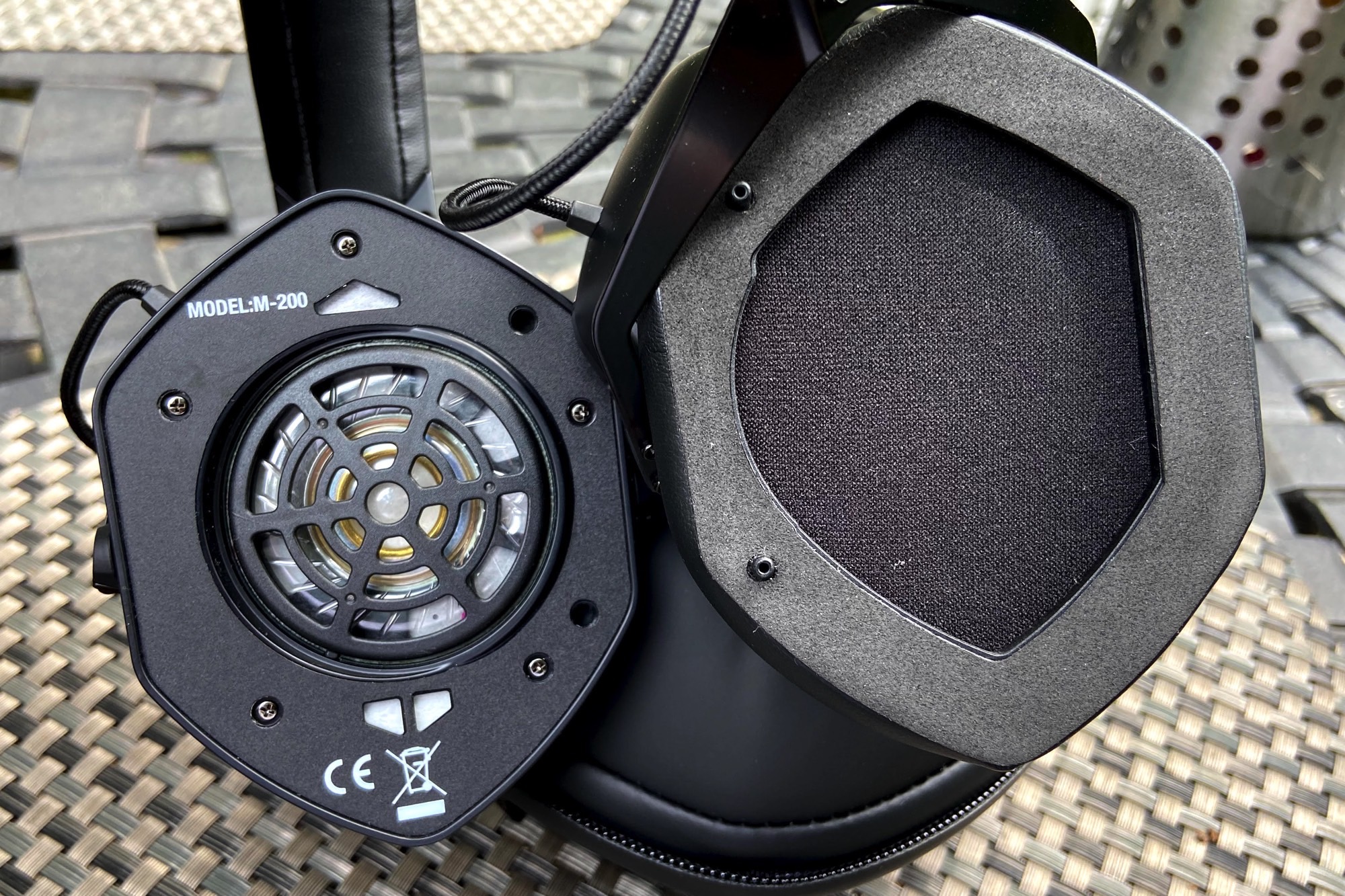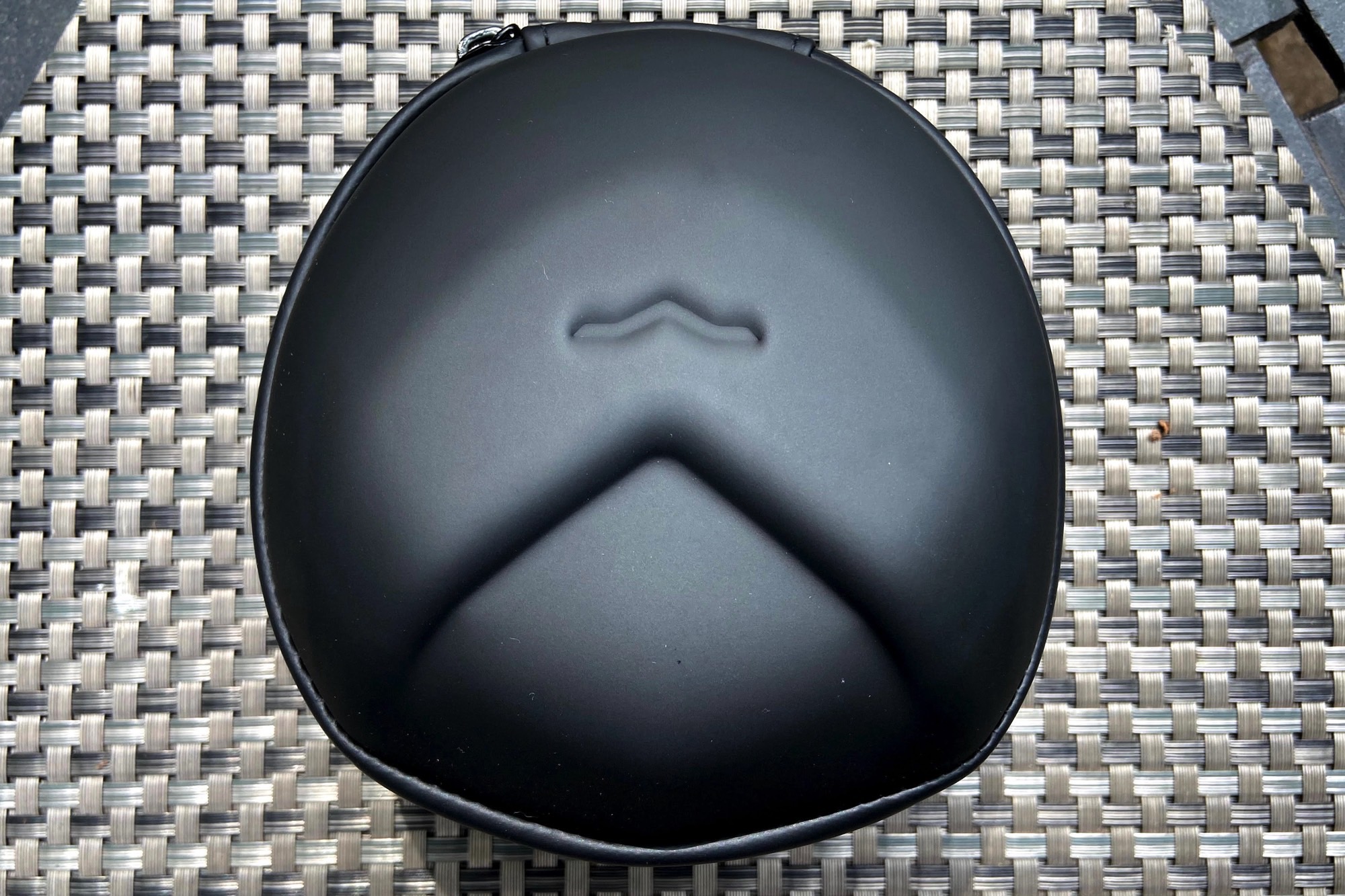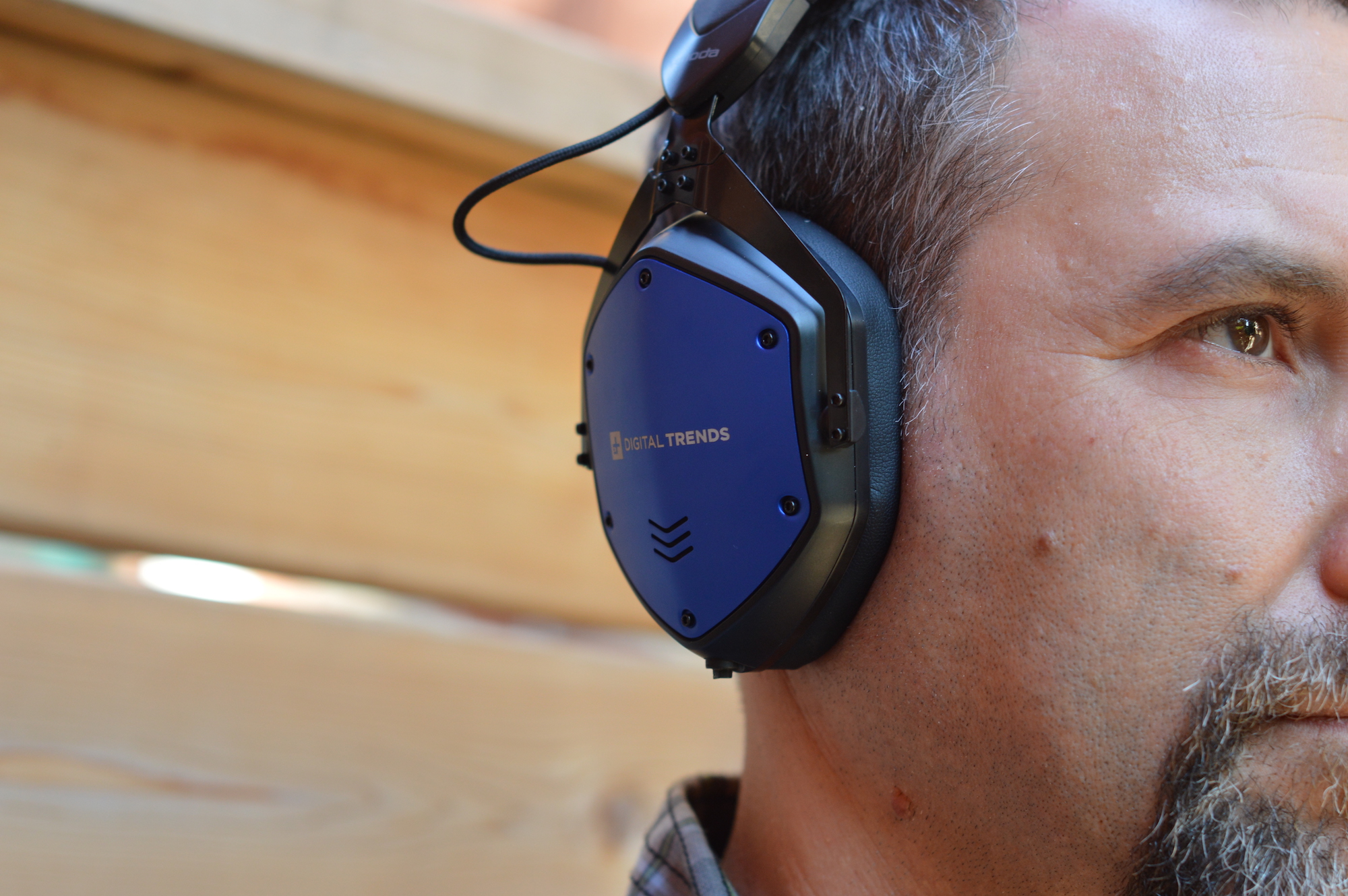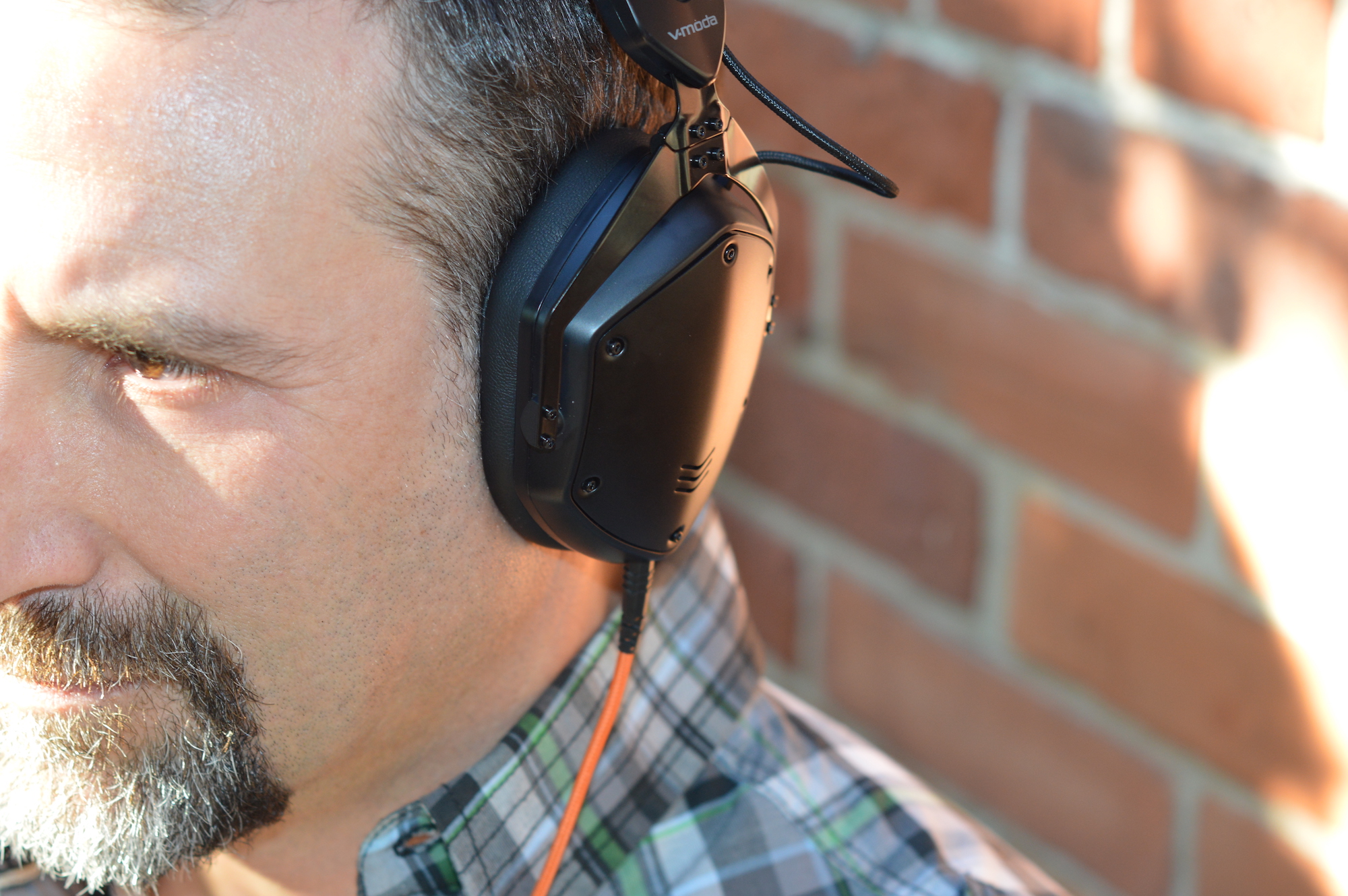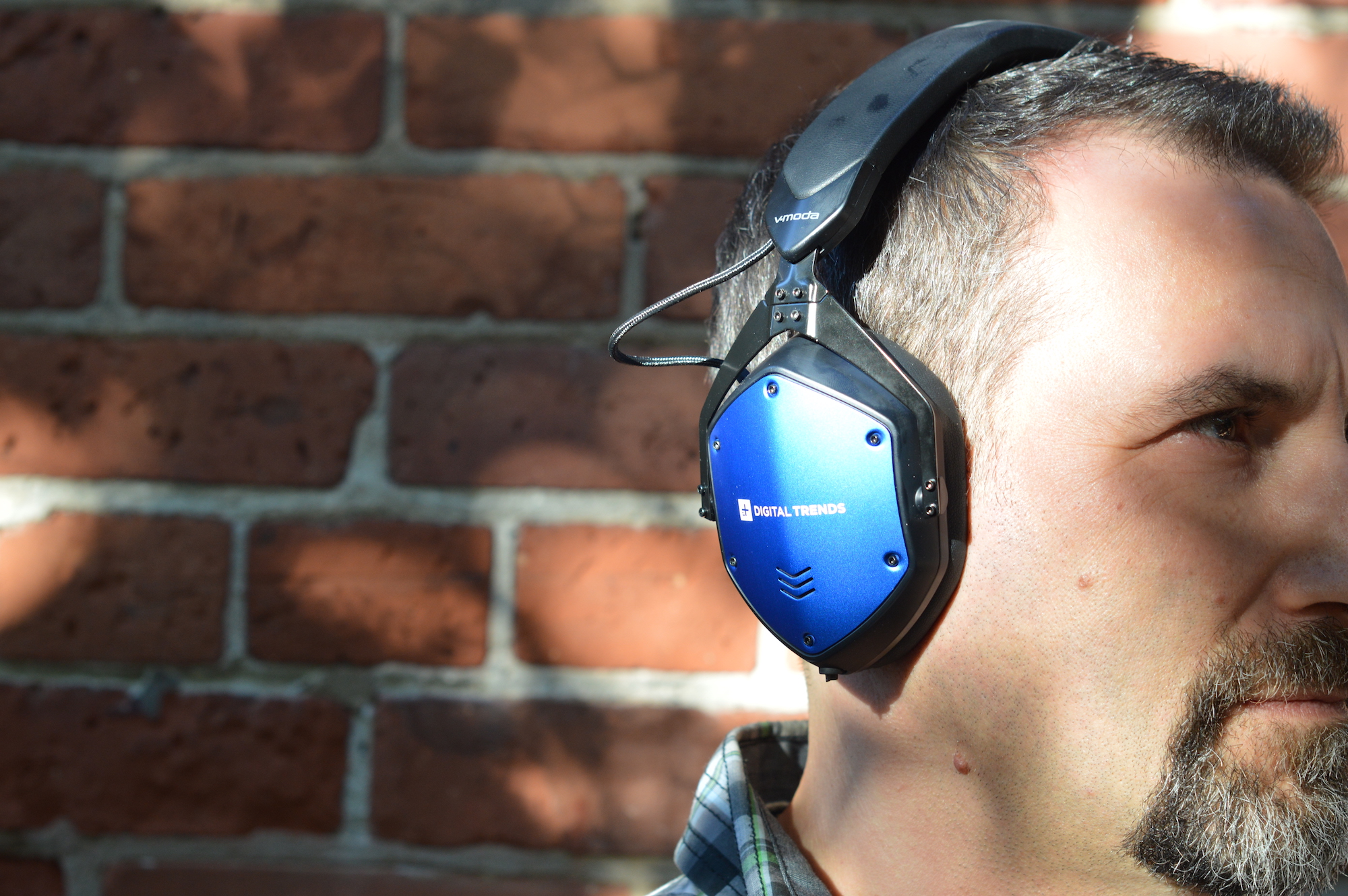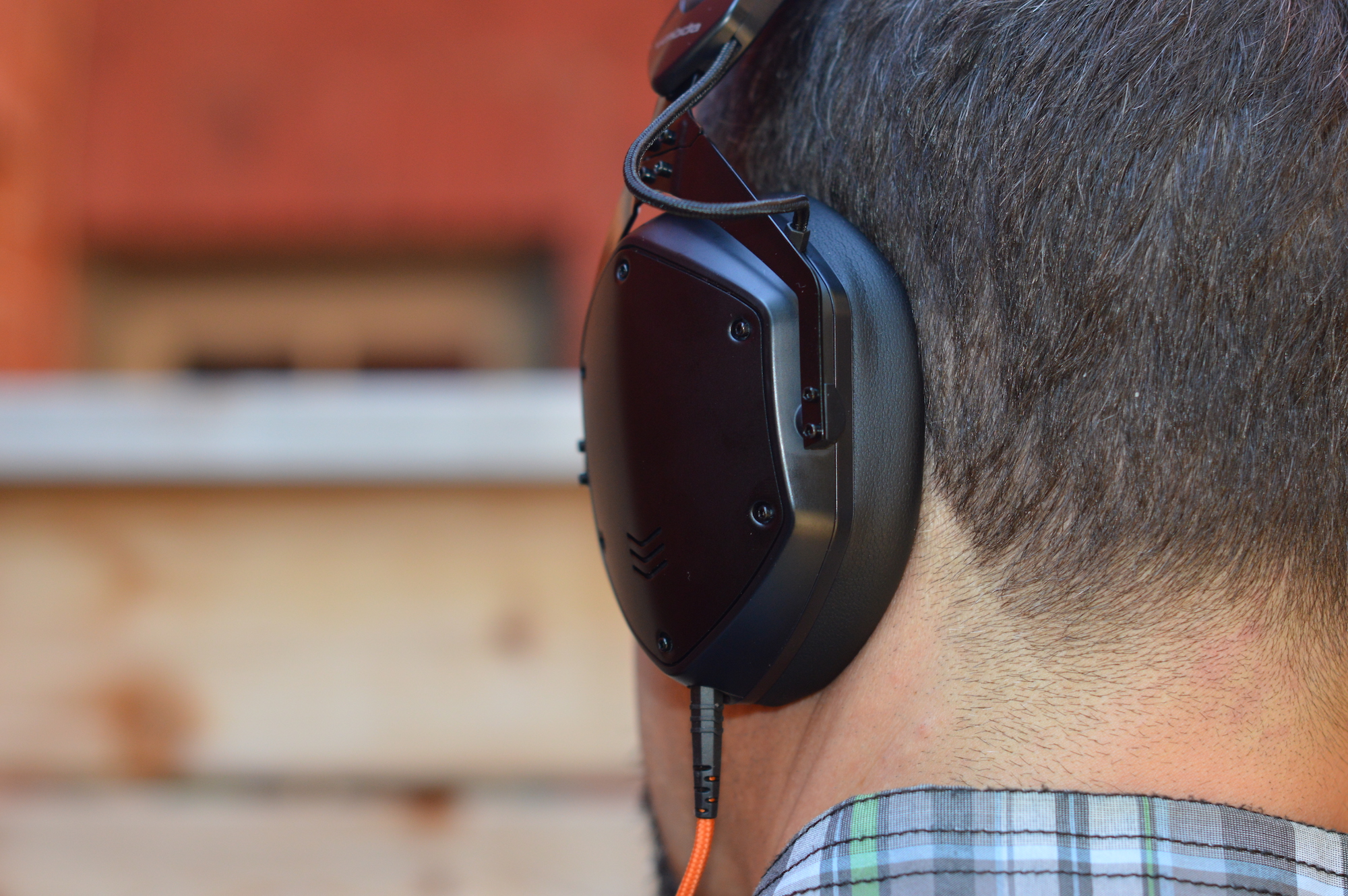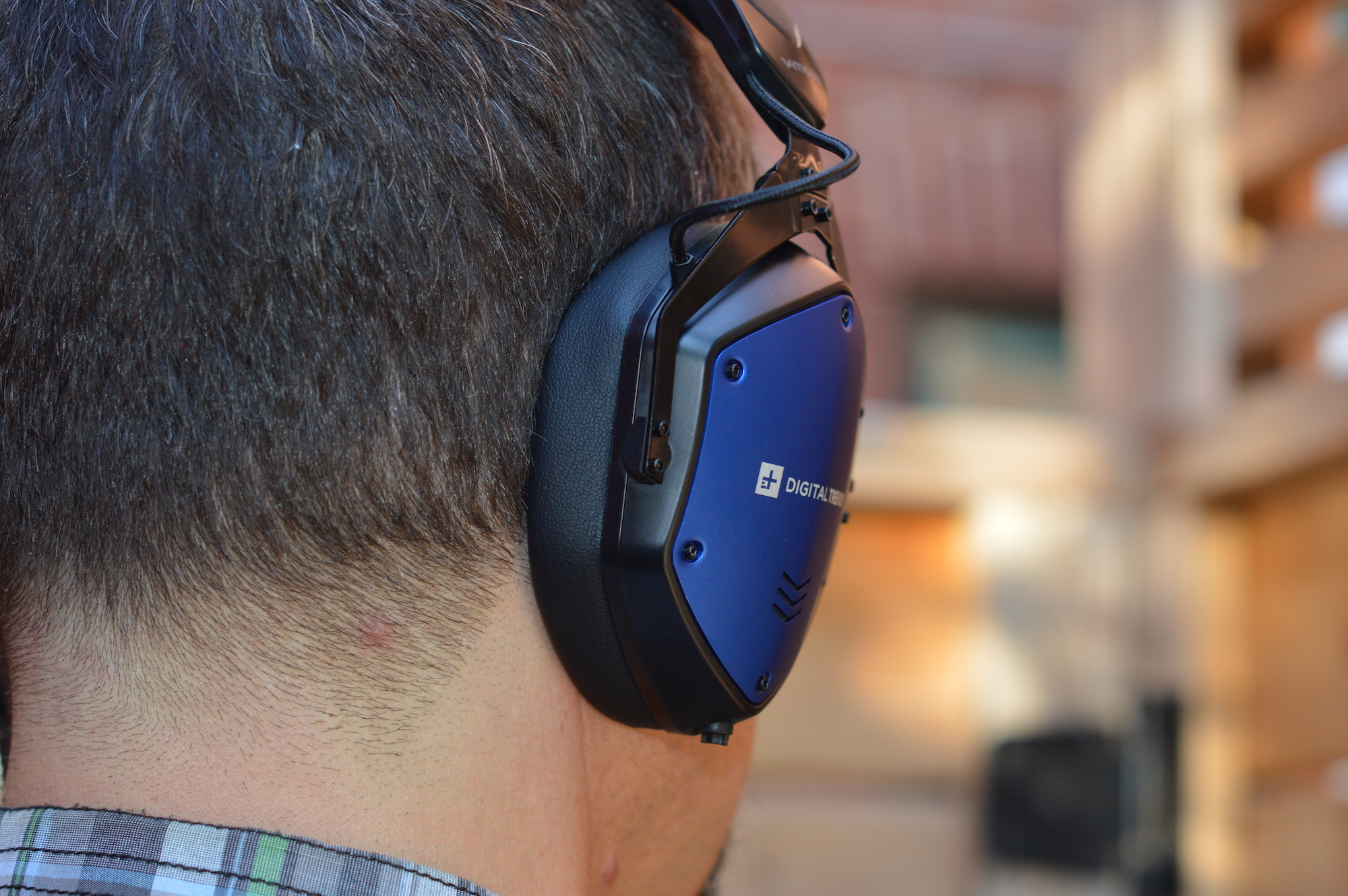
- Highly detailed and precise sound
- Mids and highs are incredibly clear
- Top-notch materials
- Very comfortable
- Balanced audio cable and input
- Restrained bass response
- Flat EQ won’t be to everyone’s liking
- Earcups may crowd larger ears
It’s been seven years since we got our hands and ears on V-Moda’s $310 M-100 Crossfade headphones. At the time, the relatively new audio brand impressed us with the M-100’s combination of killer looks and high-end audio chops.
Now, the company is back with its follow-up, the $350 M-200. Can the new kid on the block still earn our praise even though most new headphones at this price are now wireless, and the original M-100 are down to $250?
Time to find out.
Design
Headphone design is a tricky business. You’ve got to balance comfort, portability, weight, ergonomics, style, and of course, audio performance. The V-Moda M-200 score highly in all, with only a few minor quibbles.
Materials and workmanship are excellent. The M-200 combine robust metal earcup pivots and hinges with soft and supple synthetic leather.
The ear cushions attach to the earcup magnetically, which will make replacing them a snap when that day eventually comes. Unlike many headphones I’ve tried, the cushions feel just fine whether you wear them with eyeglasses or not.
Comfort, portability, weight, ergonomics, style, and of course, audio performance. The M-200 score highly in all.
The “FlexSteel” headband — as the name suggests — can be twisted far enough to let you use the headphones one earcup at a time for quick monitoring or DJing, yet it maintains its shape when used normally.
I didn’t use the M-200 for months upon months, so I can’t attest to how much abuse they’ll take, but their build quality inspires a lot of confidence.
Though slightly heavier than some other high-end headphones at just over 10 ounces, the M-200 feel perfectly balanced once they’re on your head. Between the firm but comfortable clamping force exerted by the headband and the fit of the earcups, there’s virtually no movement at all. I wouldn’t rush out to go jogging with these puppies on, but you certainly could.
Those with smaller heads may find the headband’s minimum size a tad too large. I wore them this way and they were perfect for me — but only just.
As comfortable as I found them, if your ears tend to stick out from your head, you may find you’re aware of them touching the inner lining due to a very shallow space between the cushions and the inner surface. Less than a half-inch separates the sides of your head and the internal grille that protects the driver. Some headphones, like Sony’s WH-1000XM3, have three-quarters of an inch or more, which gives a much roomier feel.
My only minor critique of the M-200’s design is their lack of a sideways rotating hinge for the earcups. Because of this, there’s no way to lay them flat when worn around the neck, making for a somewhat uncomfortable experience. Those impressively thin metal earcup pivots actually sat right on my collarbones and I couldn’t leave them there for more than a few minutes.
Connections and cables

As a set of wired headphones, you won’t find any buttons, switches, or touch controls on the M-200. Two 3.5mm ports at the bottom of each earcup are the only interruptions to what is otherwise a very clean look.
The left port is meant for a standard headphone jack (something that’s becoming hard to find on smartphones these day), while the right port is reserved for those who have access to a balanced stereo output.
Balanced outputs are even rarer in the personal audio world, but are quite common among audiophile-grade gear and in professional studio environments. They’re prized for their near-complete elimination of interference from one channel to another, something that very discerning listeners claim they notice in unbalanced headphones.
What’s impressive about the M-200’s balanced audio design is that it not only uses a single cable but also a single input — most balanced headphones end up splitting their balanced cables into left and right connections.
V-Moda includes both a balanced cable, as well as the more conventional unbalanced stereo cable, which comes with an inline mic and a single-button remote for handling phone calls and play/pause features on most smartphones.
A custom look

Out of the box, the M-200 look fantastic in my opinion. Designing headphones that don’t look like they’re trying to swallow your head is hard — especially when they’re an over-ear model.
These sweet aesthetics can be enhanced with your choice of swappable metal “shields.”
And yet, the M-200 are sleek and low-profile, thanks to the hexagonal shape of the earcup outer shells and the metal pivots, which seamlessly continue the arc of the headband.
These sweet aesthetics can be enhanced with your choice of swappable metal “shields” (the very outer panel of the earcups). These add to the M-200’s price, but if you want your headphones to be a reflection of your personal style, it’s $30 well spent, and the options are almost unlimited.
V-Moda kindly sent us a set of personalized Digital Trends shields for our review — custom logos are yet another option.
Portability
Because the M-200’s earcups don’t swivel, the included hard-shell travel case has turtle-like proportions to allow for the extra height. The resulting bulbous shape is going to be hard for most people to comfortably stick in a backpack or laptop bag, so V-Moda includes a carabiner that lets you clip the carry case to the outside of your bag.
Despite the slightly awkward shape, the case is actually quite small, and the M-200 perform an admirable job of folding into the tight space while still leaving room for both cables. An internal pouch for cable adapters would have been a nice touch — especially since you’ll need to bring one along unless your smartphone happens to have a headphone jack — but alas, your adapters will need to float freely in the main cavity.
Sound quality
The best way to describe the M-200’s sound signature is “scalpel-sharp.” The sheer amount of detail they are able to render is astonishing, especially in the mids and highs, which typically end up competing with one another in lesser headphones.
Not so with the M-200, which create a separation of frequencies that allow each instrument and each voice to be appreciated to the fullest.
As with the M-100, this precision can at times be achingly bright. My smartphone’s volume control wasn’t nuanced enough as I tried to find the right balance of amplification that would let me enjoy the M-200’s superb definition without causing pain.
Unfortunately for those hoping for a repeat of the M-100’s impressive bass-forward stance, the M-200 have a restrained low-end, resulting in the “flat” EQ that is so valued by audiophiles and professionals. But many folks who don’t fall into these categories may be unprepared for the M-200’s correspondingly gentle bass response.
The sheer amount of detail they’re able to render is astonishing, especially in the mids and highs.
Even on tracks that go to great lengths to create low-end you can feel in your chest, like my go-to Boom Boom Pow by the Black Eyed Peas and Hans Zimmer’s Time, the M-200 take a restrained approach to bass, favoring nuance over power.
It can be delicious: This balance brings out all of the beauty of an acoustic guitar on a track like Road Trippin’ by the Red Hot Chili Peppers, and full-orchestra classical pieces are a joy, especially if you like nothing better than picking out your favorite instrument.
But it can also be disconcerting: This level of purity has a degree of attack that those used to an adjusted EQ, like the kind that attempts to warm up the sound, will find unpleasant at times.
When describing a headphone’s soundstage — the imaginary space in which the music plays — we often use terms like “wide” or “immersive.” But once again, the M-200’s unique characteristics evoke a different set of adjectives. The placement of musical elements is remarkably precise. While listening to tracks that I’ve heard dozens, if not hundreds, of times, I found myself suddenly aware of subtleties — like a backing vocal or a light use of a tambourine — in a way I hadn’t been before.
To be clear, it’s not that I was unaware of these elements. But the M-200 let them occupy such a clearly defined space on the soundstage, it felt as though I could turn in my seat and actually see the instrument or vocal in question. If you’ve never heard this level of precision before, it’s guaranteed to bring a smile to your face.
Our take
Granted, $350 is a lot to drop on a set of headphones that aren’t wireless and don’t have active noise cancellation. But for those who seek sonic perfection, the V-Moda M-200 deliver a virtuoso performance for hundreds of dollars less than other audiophile options.
Is there a better alternative?
Finding a set of audiophile headphones with a balanced audio input can be shockingly expensive, making the M-200 a highly accessible model with this feature. As such, it’s in a class of its own.
If you dig everything about the M-200, but you’re worried that their flat EQ might not be to your taste, look no further than V-Moda’s own M-100 Crossfade, or M-100 Crossfade Master. They lack the balanced input, but you’ll find the sound warmer, the prices more affordable, and the designs virtually identical, including the custom shield option.
How long will they last?
The V-Moda M-200 come with a very generous two-year warranty, but the company also offers what it calls its “Immortal Life Replacement Program,” which provides discounts on new V-Moda products should the M-200 fail after the warranty period.
That’s a nice safety net, but given their superb construction, I doubt you’ll need it.
Should you buy them?
Yes. As long as what you’re after is supreme audio precision in a comfortable and stylish set of wired cans, the M-200 are guaranteed to satisfy.
Editors' Recommendations
- V-Moda Crossfade 3 Wireless promise an immersive club experience
- V-Moda’s M-200 get the wireless ANC upgrade we’ve been waiting for
- V-Moda’s M-200 studio headphones promise reference-quality audio for $350



